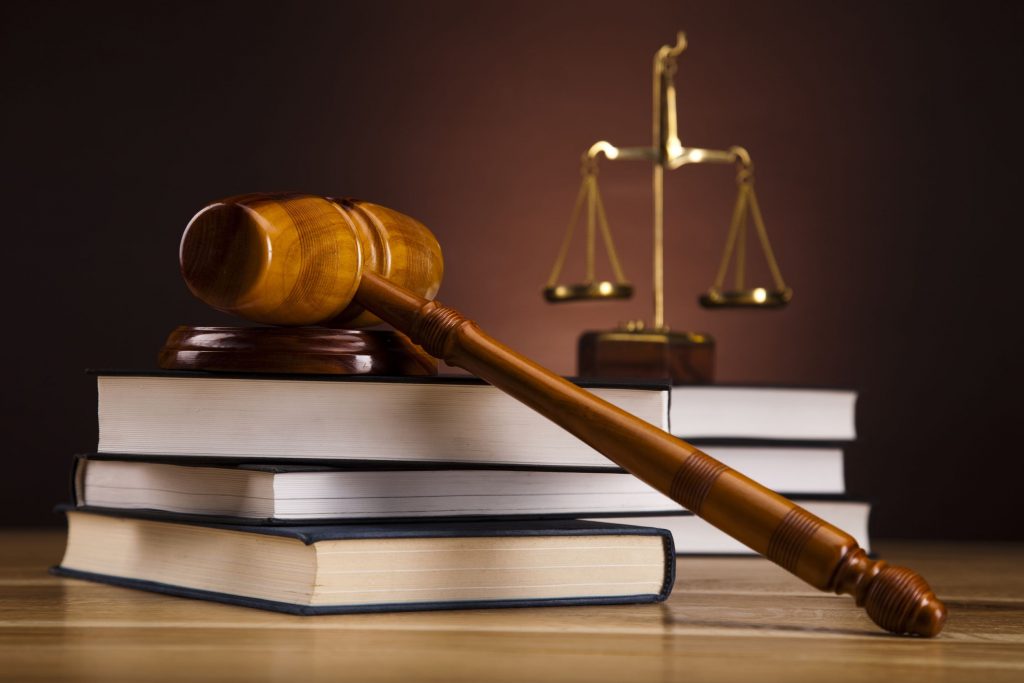Introduction
The decisions made by the public bodies or authorities in certain circumstances require a check on them. What if the authority exercised by them is used arbitrarily or unlawfully? Judicial review is one of the weapons available to check such a decision. Put simply, it is a court proceeding in which decisions like if an act was done lawfully is decided by a judge. It is the power vested to exercise control over the public bodies. It does not focus on the conclusion of a decision but the course in which they took place. It can be exercised to control the activities of the Legislature, the Executive, and the administrative bodies. All these activities are examined in the light of the grundnorm; that is, the Constitution of India. If an activity seems repugnant to the Constitution it will be deemed to be null and void.
Administrative action means any judicial decisions or official administrative pronouncement, private ruling regulating the procedure, a notice or announcement by any legislative body, a court,a government authority or a regulating body having appropriate jurisdiction.[i] The power of judicial review depends on facts and circumstances of each case and no universal rule can be laid down for the same. It is not the decision which is in question but the way it was made.
Recognition under the Constitution
The power of judicial review is vested and granted under Article 13 of the Constitution of India. It indicates that if any law is made in contravention of the fundamental rights of a citizen, so far it is interrogation and repugnant, it shall be null and void. The term used for Indus Claus has a wider ambit as emphasized[ii]. Such acts are declared to be unconstitutional. Circumstances emerge in such a way that it becomes unavoidable to exercise the power of judicial review. Judicial review of administrative actions ensures a system of checks and balances. The main objective of Article 13 Clause 2 is to secure the paramountcy of the Constitution especially about fundamental rights[iii]. In a leading judgment[iv] the ambit of fundamental rights has been indicated. Various aspects of human freedom, if studied in isolation or exclusive of each other for their protectionwill neitherbe realistic nor beneficial and would rather defeat the purpose.
The procedure depriving a person of his life or personal liberty as enshrined under Article 21 of the Constitution should be just fair and reasonable. The rule of natural justice cannot be avoided. It is a distillate of due process. These concepts have been rejected in the Gopalan[v] case. Justice Krishna Iyer observed true our Constitution has no “due process clause”of the 8th amendment of the American Constitution but after this case, the consequence is the same[vi]. The restriction to be fair and reasonable would be dependent upon each case. Article 19 lists the rule in this regard.
Also in Minerva Mills Ltd. vs. Union of India[vii], the independence of the Judiciary has been laid down while dealing with actions of the administration; the validity of the legislation and its power to review them. The protection of the citizen is of utmost importance and to protect them from the abuse, the rule has been so emphasized.
Remedies Available
You might have come across the legal maxim ubi jus ibiremedium. What does it say? Where there is a right there is a remedy. How these remedies can be exercised has been laid down under article 32 and 226 of the Constitution. It provides power to the citizens and only citizens to reach the superior authorities in case of infringement of their fundamental rights. The High Court has superior powers than the Supreme Court in this regard. Both of them can exercise the power to issue the writs. But Supreme Court can be reached only in case of violation of a fundamental right whereas the High Court can be reached for the violation of the fundamental right and any other right. There are five kinds of writs that have been recognized in the Constitution, namely-
- Habeas corpus – prevents illegal detention
- Mandamus-performance of public duty
- Quo warranto-authority in question
- Certiorari-correction of any error
- Prohibition-jurisdictional encroachment
All these are issued for the protection of citizens’ fundamental rights. They ensure that there is no arbitrariness in the system.
The Supreme Court in a recent judgment[viii] observed that the power of a High Court under article 226 can be exercised on certain grounds of perversity, illegality, irrational, and want of power if there is an error that appears to be on the face of it. It is a power to be exercised for the decision making process but not the decision itself. The power exercised by the administrative bodies shouldn’t be exceeding by the extent of power vested in them. In case of such abuse, their act becomes ultravires, thus becoming a ground to bring an action. The doctrine is the foundation of administrative law and in some way supports the concept of Rule of Law. To safeguard the interest of the citizens, the rule of Natural Justice has to be the basis for every decision.
Judicial Review and Judicial Activism
We often come across two different terms judicial review and judicial activism. The latterdeals with the benefit of society in general by the form of judicial actions. One need that is to be understood is that they cannot make laws it can just look after how a decision was made. There are numerous cases on judicial activism where the personal view of a judge finds home. This has been criticized too. In a leading judgment, it was laid down that fundamental rights are immutable and cannot be amended[ix]. The basic structure of the Constitution of India can also not be amended[x]. In a recent example, the Supreme Court did assume the position of a Supervisor in the CBI investigation[xi]. The attacks of terror against Hasan Ali Khan involved such power.
There is a fine line difference between the two concepts. A famous case of 2006[xii] the court decided that Fundamental rights granted under Articles 14, 19, and 21 stand stop in Constitutional values in fulsome recognition that human dignity, equality, and freedom are conjoined, reciprocal and similar values. The shift of the power from the protection of the citizen has moved to the constitutional scheme of the Executive branch. The major policies of the Government are questioned in the name of public interest[xiii]. Decisions of the Speaker in the Legislative Assembly are questioned. Certain spheres of Legislature which earlier were excluded are now under the ambit of it.
Pros and Cons
The concept finds the light to the rule of law and democracy. It is for upholding the principles of Human Rights and Natural Justice. The power is been to be overreached as a theory believes we elect representatives and not the judges. The belief is sovereignty and therefore doesn’t possess a word in parliamentary majorities. Judicial wisdom stands questioned. The decisions taken by such representatives represent people and their will. It is believed to create more problems than solve. Delaying processes and fear of tyranny in the judiciary act as a hindrance to such power.
If not under the Constitution, the court vests power to issue orders of injunction, damages, and declaration. Judicial evasion of the main issues of the nation tends to pose a threat. We cannot deny that Government and political powers are guided by religious beliefs and the issue which important stand with no actual attention.We want a judicial system to be speedy and cost-effective.
There has been a strong clash between the Legislature and the Judiciary. Can we say that judicial review altogether should be abolished and that there is no need for such power? Can we trust the Legislature so blindly to think that they will make laws for the public and not against their interest? Secondly, can the power exercised by them always be in consonance with Part III of the Constitution and not abused?
Another scenario is that we have a system of the eye to strike a balance between these two aspects of law made by the Legislature and the fundamental rights of the citizens through harmonious construction. Judicial review is just an aid to the power that the Legislature exercises. It is for the protection of the citizens of the nation. Both need to understand the importance of each other. The increase in corruption and administration in public bodies has to be avoided. Judicial review acts as a solution to the evils.
Conclusion
Judicial review in administrative actions is a significant weapon available and protected under the Constitution. Despite the criticism, we cannot deny the purpose it serves. If there is no such power, the evil of arbitrariness cannot be curbed. The court should not be deemed to be against the processes of a democratic Government. It can act as a guide for the three organs of the Government to have a fruitful working concerning each other. The concept of separation of power has been imbibed. But we can’t study them exclusive of each other. They are all parts of the same field. Judicial review acts as a plow to them. Judicial activism is an emerging concept and shouldn’t be overreached in future time. A lot of landmark judgments have emphasized the rule from time to time. We need to highlight that the Judiciary is not accountable for the pronouncements it makes but the elected representatives are. And this comes to a bearing on their political stands.
By-
Vanshika Garg
(Amity Law School, Noida)
References:-
[i]https://www.lawinsider.com/dictionary/administrative-action
[ii]Art 13(3) of the Constitution of India,1950
[iii]Renu vs. District and Session Judge,TizHazari AIR 2014SC 2175
[iv]Maneka Gandhi vs. Union of India AIR 1978 SC 597
[v]A.K. Gopalan vs State of Madras AIR 1950 SC 27
[vi]Maneka Gandhi vs. Union of India AIR 1978 SC 597
[vii]AIR 1980 SC 1789
[viii]SarvepalliRamaiah (Died) as per LRS &Ors. Vs. The District Collector,Chittoor District &Ors
[ix]A.K. Gopalan vs State of Madras AIR 1950 SC 27
[x]Keshavananda Bharti vs. State of Kerela(1973) 4 SCC 225
[xi]2G Spectrum cases CBI (04)
[xii]M. Nagaraj vs. Union of India (2006) 8 SCC212
[xiii]2 G Spectrum Case and Coal Mines Allocations Case
Previous post: https://desikanoon.in/a-long-walk-to-exploitation-up-suspends-labor-laws-for-3-years/


